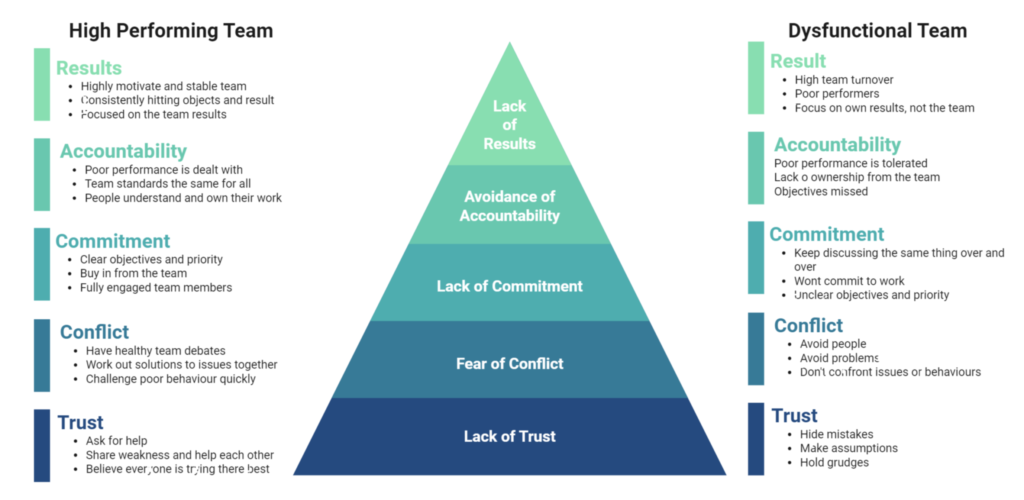The book in a paragraph
There are five fundamental causes of team dysfunction: absence of trust, fear of conflict, lack of commitment, avoidance of accountability and inattention to results. These dysfunctions can lead to team failure. The way to address these dysfunctions is through building trust among team members, encouraging open and honest communication, fostering commitment to shared goals, establishing clear accountability measures and prioritising team results over individual achievements.
Summary of The Five Dysfunctions of a Team by Patrick Lencioni
This is a summary of The Five Dysfunctions of a Team by Patrick Lencioni. These notes are informal and may contain quotes from the book.
Not finance. Not strategy. Not technology. It is teamwork that remains the ultimate competitive advantage, both because it is so powerful and so rare.
Patrick Lencioni
The Five Dysfunctions of a Team is a business management model developed by Patrick Lencioni. It describes the five common pitfalls that can undermine the effectiveness of a team and prevent it from achieving its goals. These dysfunctions are:
1. Absence of trust. Members of the team do not trust one another and are unwilling to be vulnerable with each other. Trust is the foundation of any healthy team and, without it, team members will be hesitant to share their ideas, ask for help or admit their mistakes. This lack of trust can lead to fear, defensiveness and even sabotage.
2. Fear of conflict. Members of the team are afraid to openly and honestly confront issues and ideas, leading to suppressed conflict and a lack of constructive debate. This fear of conflict can lead to artificial harmony, where team members avoid discussing difficult topics or voicing dissenting opinions. This can result in poorly thought-out decisions, as the team has not fully explored all of the options.
3. Lack of commitment. Members of the team are not fully invested in the team’s decisions and are not held accountable for their actions. When team members are not committed to a decision, they may not put in the necessary effort to ensure its success. This can lead to a lack of accountability and a lack of follow-through on tasks.
4. Avoidance of accountability. Members of the team do not hold themselves or their peers accountable for their actions and behaviors. This can lead to a lack of ownership and responsibility, as team members do not feel accountable for their contributions to the team.
5. Inattention to results. Members of the team are more focused on their own interests or goals rather than the success of the team as a whole. This can lead to a lack of coordination and alignment, as team members are not working towards a common goal.

To address these dysfunctions and improve team effectiveness, Lencioni suggests that teams should focus on building trust, promoting healthy conflict, achieving commitment, embracing accountability and focusing on results. This requires a combination of open communication, transparency, and the establishment of clear goals and expectations. By addressing these dysfunctions, teams can become more cohesive, productive, and successful.
Where to go next
- Read our summary of Patrick Lencioni’s book, The Advantage, which incorporates the five dysfunctions team building model into a broader model of organisational performance
- Watch a video on the five dysfunctions of a team by the author Patrick Lencioni (here’s a longer video, which explores the model in more depth)
- Buy a copy of The Five Dysfunctions of a Team: AU • UK • US


